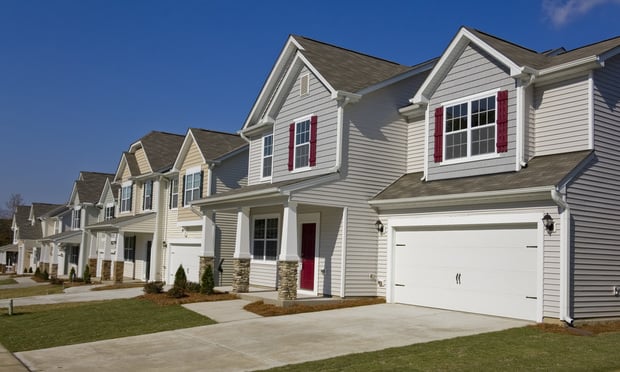Chief economist Mark Obrinsky of the NMHC shared his data through July 2000 with GlobeSt.com, figures that demonstrate the hot demand for residential real estate. Obrinsky explains that through July there were 8,156 permits issued in Westchester County, the five boroughs of New York City and Rockland County combined. The total for all of last year was 11,495; in all of 1998 there were 10,342. The number in 1997 was only 8,653.
The figures for five or more multifamily units reflect essentially the same trend, Obrinsky says. Through July there were 5,058 permits and in all of 1999 there were 6,729 permits, the highest figure in years. The Census Bureau also records absorption rates for apartments in New York versus the national average that reflect a three-month absorption rate of 85% here and 72% nationally. Over a six-month period, the absorption rate was 96% in New York and 89% nationally.
Heiberger, however, calling himself "a broker on the front line," explains that there is a lag time between when sales are initiated and when they appear on reports, noting that statistics for sales now reflect purchases begun months ago. He says he noticed the slowing when "the Nasdaq dipped in the spring and the Fed hiked interest rates. Some people lost paper wealth--I mean a lot of money. So now they're hesitant to buy."
Recommended For You
Want to continue reading?
Become a Free ALM Digital Reader.
Once you are an ALM Digital Member, you’ll receive:
- Breaking commercial real estate news and analysis, on-site and via our newsletters and custom alerts
- Educational webcasts, white papers, and ebooks from industry thought leaders
- Critical coverage of the property casualty insurance and financial advisory markets on our other ALM sites, PropertyCasualty360 and ThinkAdvisor
Already have an account? Sign In Now
*May exclude premium content© 2025 ALM Global, LLC, All Rights Reserved. Request academic re-use from www.copyright.com. All other uses, submit a request to [email protected]. For more information visit Asset & Logo Licensing.








